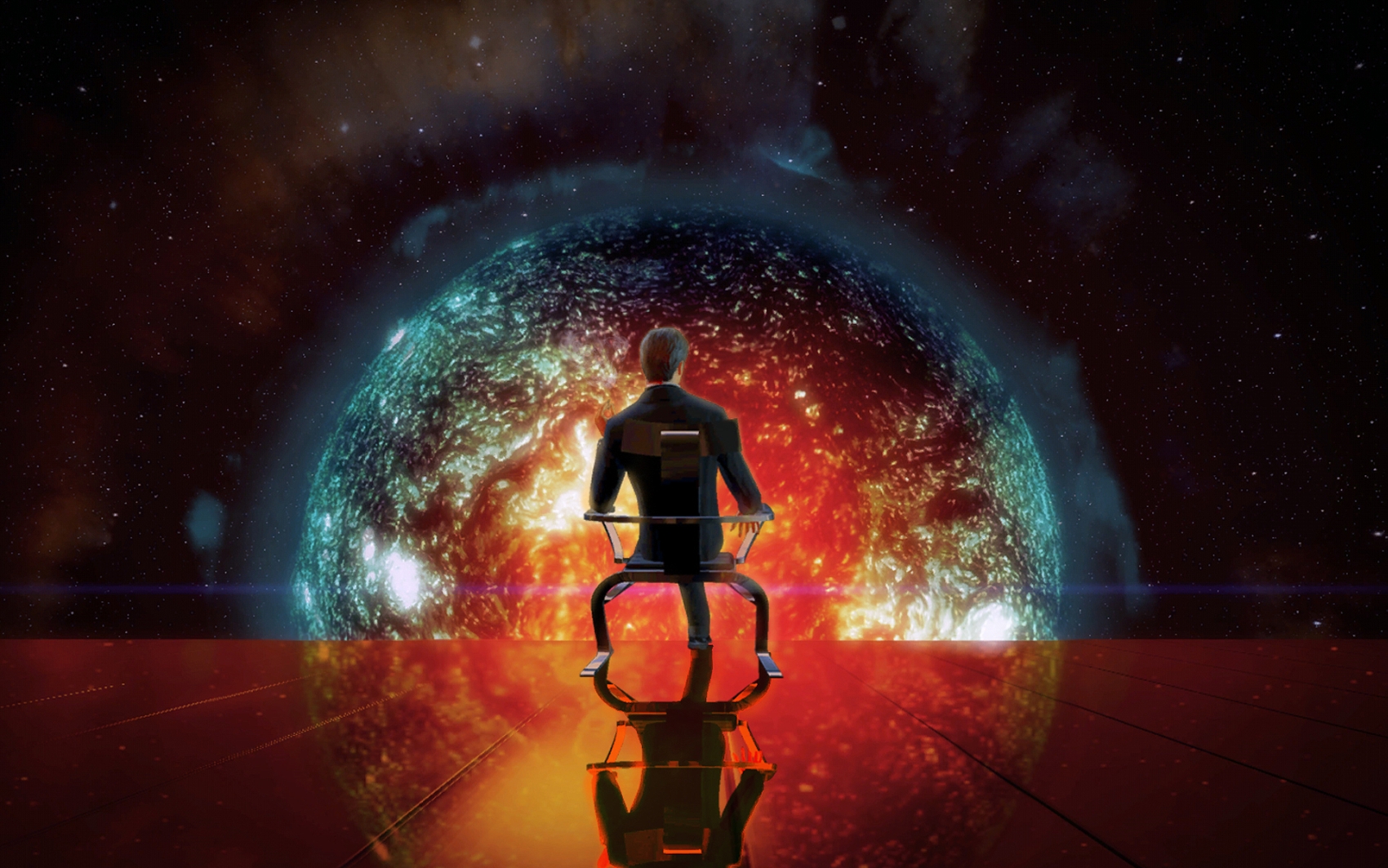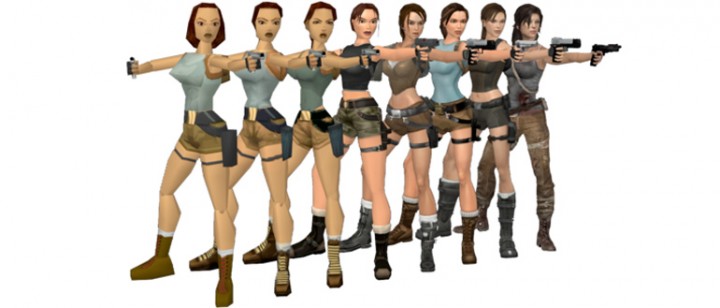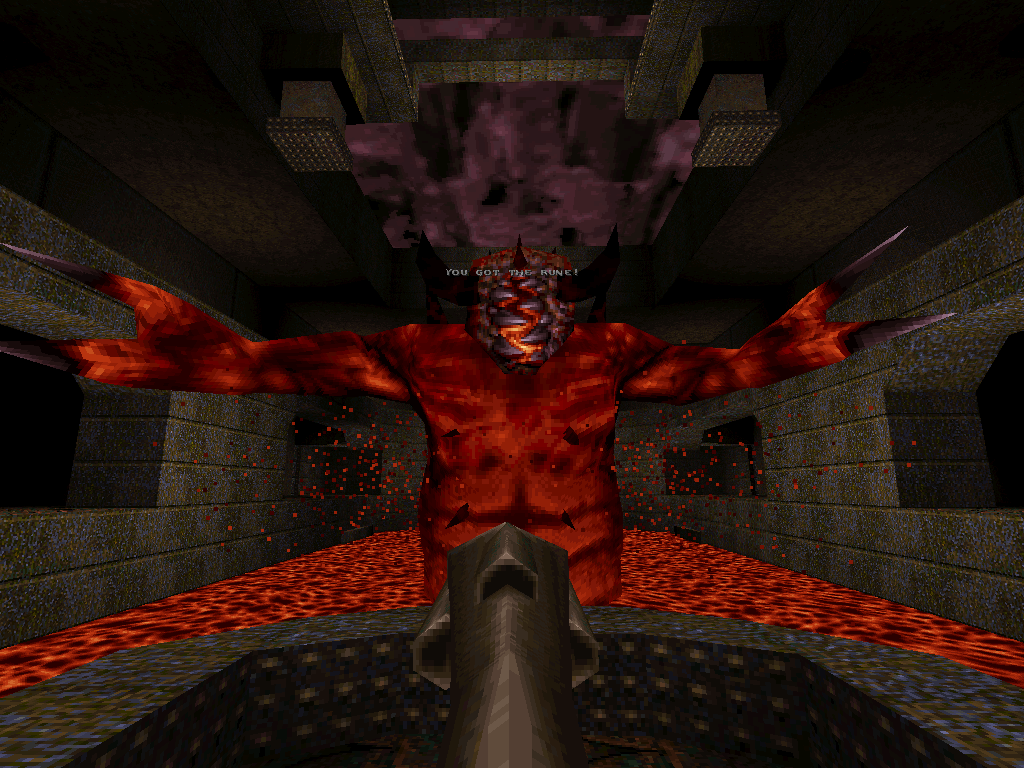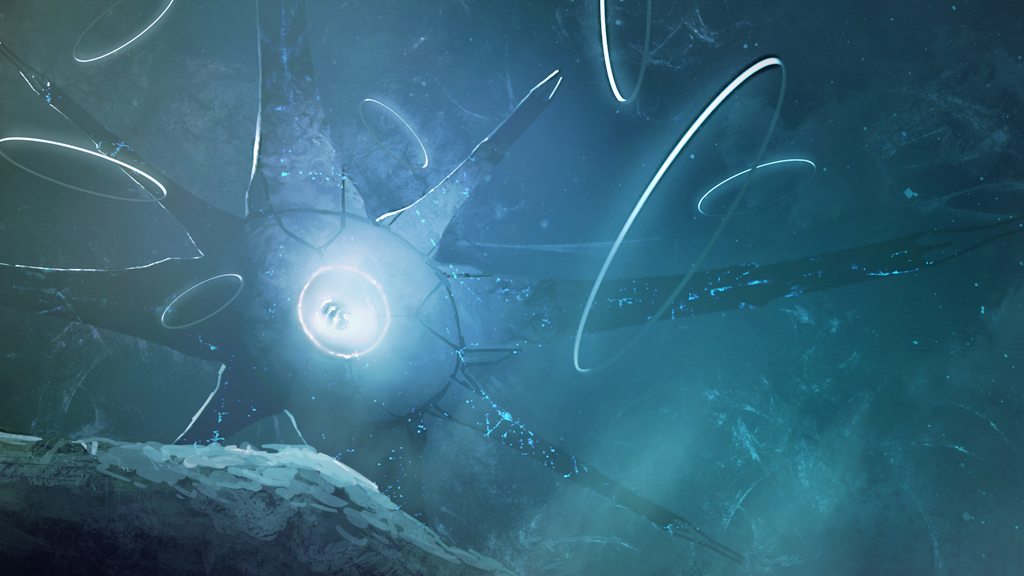Art vs Graphics: Our Expectations For Present and Future Games

Since the advent of computer gaming many things have come and gone, but one thing has always been at the forefront of gamers’ minds:
Graphics.
With every new game graphics have become more complex, more involved, and, most importantly, more expensive. Larger and larger sections of a game’s budget are devoted to lovingly rendering every meaningless detail on a character model, like the scratches on a Master Chief’s armor to Miranda’s exquisite ass cheeks.
That being said, do we really need this obsession with graphics? I mean, polished graphics and attention to detail can help to add a level of immersion that would be otherwise impossible. However, there comes a point of diminishing returns, and I think that we’re at least getting close to that point, if we haven’t already blown past it.
Progression
From Pong to Doom to Far Cry 4 graphics have steadily improved. We’ve come a long way from the pixelated Nazis of Wolfenstein 3D, and even farther from Pong. And while Wolfenstein 3D and Doom can probably be considered the grandfathers of modern games, the advent of modern graphics didn’t come until 1996 with the Quake engine.
The Quake engine was the first real 3D engine, and can probably be considered the first modern graphical system. For the first time character models were defined by polygons instead of by pixels and sprites. While this not only allowed game designers to design much more complex levels and enemies, it wasn’t exactly impressive in it’s own right.
In fact, it was kind of ugly.
I remember looking at the original Quake when it came out and thinking to myself, Really? My old games look better than that.
It really wasn’t until Halo: Combat Evolved came out that games really started to look good again, and after that the rate of improvement only got faster. Half Life 2 came out in 2004, a mere 3 years after Halo, but the two are hardly comparable graphics wise. Each year industry giants came out with new advancements and engines, racing to outdo one another. Graphics took the center stage more and more each year at gaming conferences. Yes, we know it’s just another Call of Duty clone, but look at those graphics!
And yet, despite the massive hard on that the industry giants have for the increasing number of pores on individual character’s faces, it seems like they (and we, honestly) have forgotten that graphics do not a good game make. In fact, an exclusive focus on graphics can be a direct detriment to the game in question. Larger and larger graphics budgets means smaller budgets for gameplay and story, after all.
And yet, for all the focus on graphics, the rate of improvement has slowed almost to a crawl. Call of Duty: Advanced Warfare, a next gen title, is virtually indistinguishable from Call of Duty: Ghosts, and really doesn’t even look that much better than Call of Duty: Black Ops II. The same is true for any modern game. Graphics simply aren’t getting better at the rate they used to be. This is because of diminishing returns.
Diminishing returns is basically when you reach a point where you start putting more into something than you’re getting out if it. Graphics is a prime example of this, because no matter how detailed a character model is, there comes a point where your eye simply doesn’t have the capacity to take it all in. Not only that, but when you’re in the middle of a firefight, you’re not going to be paying attention to the lustrous sheen of your character’s hair, no matter how much effort was put into it.
Not only that, but when you focus exclusively on graphics, you risk being outdated the very moment something better comes along. The Crysis series is a prime example of this. Crysis 2 was a game that focused on graphics nearly to the exclusion of everything else. The end result was a game that had an incredible level of detail, and mediocre story and gameplay. The consequence? Crysis 2 was forgotten the moment something more graphically advanced came along.
Finally, latest gen graphics tend to be an inhibitor more often than they are an enabler simply because the majority of gamers don’t have the money to dump into a cutting edge PC or a brand new console. This means that companies hell bent on making the most graphically intense game known to mankind only limit their target audience, because most gamers won’t even be able to install it on their machine, let alone run the bloody thing.
Of course, having advanced graphics isn’t a bad thing, as graphics enable the thing that makes video games distinctive:
Art
Because video games, when you think about it, have always been about art. True, they are more than just art. They’re story and experience and art and music all wrapped up into one tiny little package. But art is the medium of great games. Art is how all of that is conveyed to you.
In fact, having a unique and compelling art style is, by and large, more important than having bleeding edge graphics. Maybe the best examples of this are older games, classics and cult hits, and indie games; games either don’t have either been outpaced by modern graphical capacity or games that never had the budget for cutting edge visuals in the first place, and yet still manage to hold their own against their modern counterparts.
Take Borderlands 2, for example. Even when it first came out, it wasn’t the most graphically intense game on the market, but its art style made it immediately distinctive. In fact, you can still play the game today and be just as entranced with it as when it first came out. This is mostly true because the developers chose to focus on art style over graphics. If the developers had chosen to focus on graphics over art, the game would have lost much of its appeal.
This is not exclusive to Borderlands, either. Portal is another prime example. Despite running on a 3 year old engine, the game was visually both visually appealing and iconic, simply because art style was a higher priority than graphics was. In fact, steering away from having bleeding edge graphics actively helped the game, as it cut down on load times, making the game nearly impossible to put down.
Not only does having a distinctive art style make a game pop out over its competitors, but it makes the game age better as well. Where games that focused on graphics, like Quake, quickly become eyesores, games that focus on art are much more permanent.
This is so true that games that focus on art over graphics, games like Homeworld 2, Bastion, and Antichamber, are still playable years and years later.
Art over Graphics
There are a good number of these games, even before the advent of indie gaming. Plants vs Zombies, in fact, comes to mind fairly quickly. Everything in PvZ was cartoony, to the point where it all looks hand drawn. And yet, that’s not a detriment to the game; in fact, it’s a selling point. The art style is immediately appealing to casual and hardcore gamers alike, widening it’s potential audience. Not only that, but if the developers had chosen to have ultra realistic zombies marching across your lawn while you defended yourself with botanical abominations, chances are the game wouldn’t have sold nearly as well. Not only that, but it made the game available to mobile devices, which are hardly the benchmarks for computing power nowadays.
Limbo is another great example of how art can trump graphics. When you come down to it, Limbo is a simplistic 2D puzzle platformer. That doesn’t really sound like it has much going for it, right? There are literally dozens and dozens of platformer games. Why should you play Limbo? Because of the art.
Limbo’s distinctive art style, the minimalistic approach, the black and white, the creepy characters, is literally the only thing that Limbo has going for it. The gameplay isn’t really all that innovative, and the story is so vague it might as well not even be there. But the art. The art in Limbo is probably some of the most distinctive and interesting you’ll see in an indie game.
Thomas Was Alone is probably about as artsy as you get, as far as computer games go. If there’s a more artsy game, I don’t know what it is. In Thomas Was Alone you play as a block, or rather, a series of blocks.
And yet, because of how the game’s art style, that’s a good thing.
You see, Thomas Was Alone is a game about the self discovery of a series of AI’s, so not only are the visuals artsy for art’s sake, but they also make sense within the context of the story. The minimalist visual style not only helps to focus the player, but it also acts as a form of worldbuilding for the game itself, helping you to both immerse yourself deeper into the game and making itself visually distinctive all at once.
The most distinctive game that uses art over graphics is Minecraft. While it is true that the voxel style of the game was chosen to accommodate the procedurally generated world, the game doesn’t shy away from it, or even try to minimize it. Instead, it revels in it, turning what would have been a crippling limitation into an innovative and interesting form of art.
The Marriage of Art and Graphics
Of course, art and graphics don’t have to be completely divorced from one another. In fact, a good number of big industry giants have capitalized on the marriage of the two concepts.
Halo, for example, not only had revolutionary graphics for its time, but it has, to this day, one of the most compelling art styles in AAA gaming. From the ships to the enemies to the skyboxes, everything that Halo did was done with art in mind. For example, when you first step off the escape pod and see Halo arcing into the sky above you is a truly awe inspiring moment. Not only that, but each and every one of the enemies is both visually distinctive and iconic.
Mass Effect is probably one of the best examples on this list. While most games focus on improving graphics as much as, or even more than, gameplay and story between sequels, Mass Effect was quite the opposite. While there was a significant graphical upgrade between Mass Effect 1 and 2, there wasn’t one between 2 and 3. Instead, that effort was spent maintaining the artistic integrity of the universe and expanding on the story. While I’m not the biggest fan of Mass Effect’s art style, I must say that the series made incredible improvements over the course of the series. Where the first Mass Effect’s art style was kind of drab, cookie cutter science fiction, the second and third installments had some amazing visuals because the developers made art their focus rather than polygon count. And because the developers focused on art style rather than polygon count, the Mass Effect is one of the premier science fiction stories of our generation.
Mirror’s Edge was enjoyable as much for it’s unique visuals and artistic style as it was for the actual gameplay. Don’t get me wrong, sailing through the air and parkouring between enemies and obstacles was a lot of fun, but the visual style and art made the game as interesting as the actual gameplay did. Imagine trying to play Mirror’s Edge in the same color palette that Call of Duty has.
The fact of the matter is that we don’t really need to focus on graphics anymore, because graphics are no longer an inhibitor. We can, in all reality, render just about anything we damn well please, and make it look good at that. We’re finally at the point where developers can stop worrying about polygon count and just focus on their creative vision.





